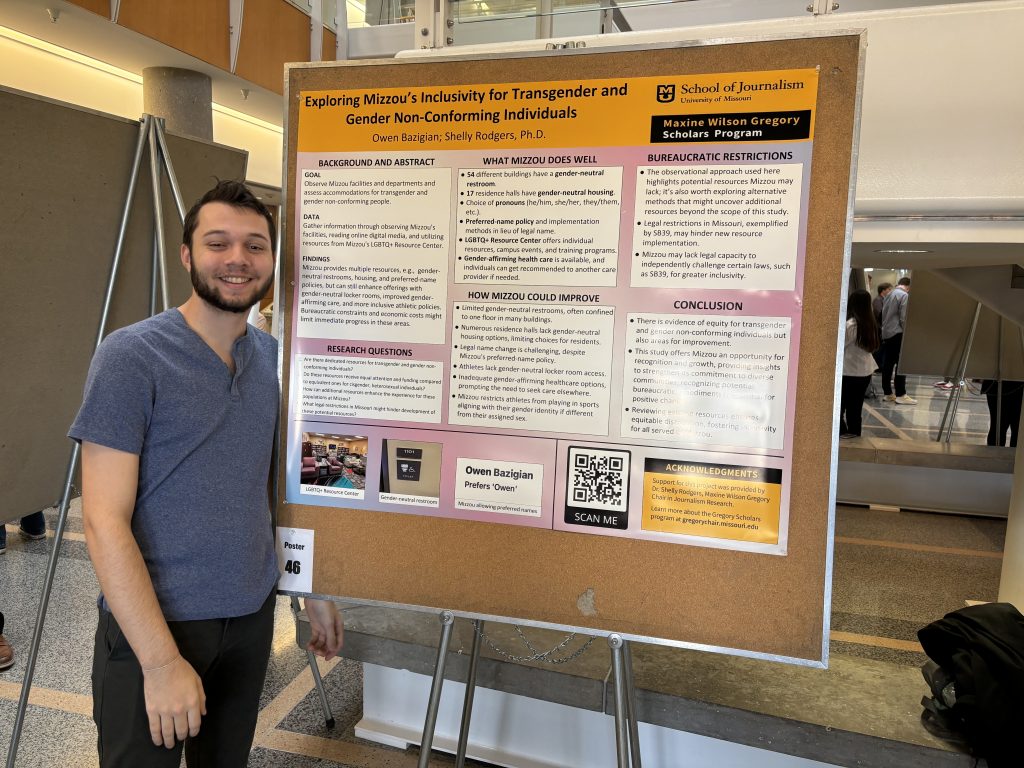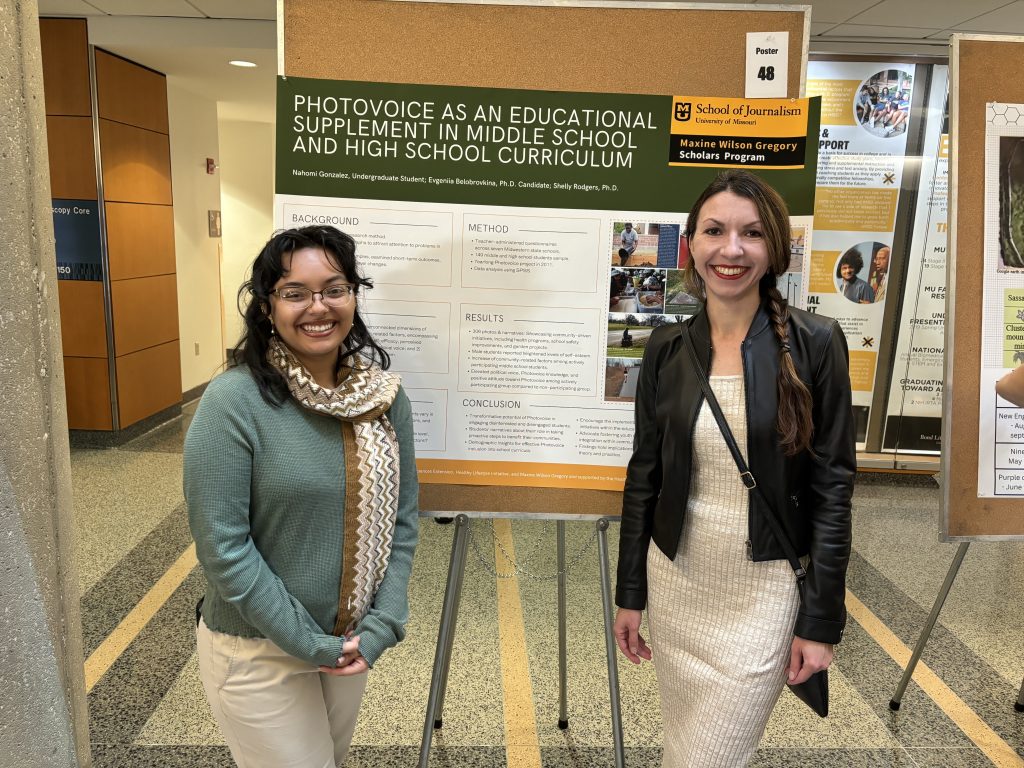How Friendly and Accommodating are Mizzou’s Facilities to Transgender & Gender Non-Conforming People?
Owen Bazigian and Shelly Rodgers, Ph.D.

Abstract: The goal of this research is to observe facilities throughout Mizzou’s campus and observe key accommodation factors and their frequency to better understand whether/how they are occurring to transgender and gender non-conforming people. Primary research questions include: Are gender-neutral restrooms available in all buildings, and on every floor? Are there trans-inclusive housing options available? Do people have the ability to change their name, their gender marker, and pronouns easily? These are just a few of the resources that make a setting more inclusive towards people of these identities. Research surrounding transgender and gender non-conforming people is already very scarce, so this research can have great potential for eye-opening effects and positive social change for the Mizzou community. The data has been collected through an observational approach, for example, by walking through Mizzou’s facilities and observing which resources are in place, if any. Department websites have also been observed to see what forms of digital media are being used to promote the advocacy and awareness of these highly-marginalized identities. The research has shown that the results are mixed: there are several resources that Mizzou does implement in some way (gender-neutral restrooms, gender-inclusive housing, ability to choose pronouns, LGBTQ+ Resource Center, etc.), yet there are multiple resources that Mizzou could also utilize to further improve the experience for people of these identities (gender-inclusive locker rooms, changing one’s name is rather difficult, gender-neutral restrooms and housing options are scarce, etc). This research is a potentially valuable opportunity for Mizzou to advance as a campus and gain insights into fostering a stronger commitment to the diverse communities within its fold. Recognizing the potential bureaucratic impediments that might impede positive change, reviewing the current inventory of resources becomes essential in methodically identifying social needs. This process aims to ensure equitable resource distribution to all individuals served by Mizzou while encouraging an open-minded approach to explore available options and actionable steps, further enhancing Mizzou’s inclusivity across all populations. The research has the potential to instigate enduring positive social change and serve as an informative foundation for a spectrum of impactful initiatives.
Photovoice as an Educational Supplement in Middle School and High School Curriculum
Nahomi Gonzalez; Evgeniia Belobrovkina, Doctoral Candidate (ABD); Shelly Rodgers, Ph.D.

Abstract: Photovoice, a methodology gaining recognition for its potential impact on empowerment, has garnered substantial attention in the literature. Existing studies have predominantly utilized qualitative approaches with limited sample sizes, focusing on short-term outcomes, and community-level changes, while often overlooking the crucial sphere of individual-level transformations.
This study aims to bridge this knowledge gap by exploring two distinct yet interconnected dimensions of Photovoice measures: 1) community-related factors, encompassing elements such as community service self-efficacy, perceived community readiness, civic action, and political voice; and 2) individual-related factors, including self-esteem. Data was collected through teacher-administered questionnaires during a yearlong Photovoice project in 2011 across seven Midwestern state schools, yielding quantitative insights of a Photovoice intervention on 149 middle and high school students.
Results indicated significantly heightened levels of self-esteem reported amongst male students and an increase of community-related factors among actively participating middle school students. Notably, the active group reported a higher level of political voice compared to the non-participating group. Respondents also exhibited a significant increase in Photovoice knowledge and a more positive attitude towards Photovoice when compared to those who did not participate.
Additionally, our investigation illuminated the transformative potential of Photovoice in engaging disinterested and disengaged students in both rural and underprivileged urban communities. A total of 306 photographic submissions were collected, accompanied by testimonials detailing a spectrum of community improvements, including local gardens, school safety advancements, and initiatives to address various local public health issues.
One notable achievement was a school district raising $50,000 in funding and securing a $203,000 grant for the construction of over 1,500 feet of sidewalks for community use. This mitigated the risk of student-vehicle accidents and significantly improved accessibility and the safety of residents as a whole.
Students told emotional and compelling narratives of the work they did and portrayed their peers as role models addressing critical issues and taking proactive steps to effect positive change in their communities.
These findings underscore the importance of youth engagement and hold significant implications for Photovoice theory and practice. To harness the unique potential and capabilities of Photovoice, it is imperative to advocate for the implementation of similar projects in educational institutions. These projects provide a genuine avenue for young participants to articulate their thoughts and experiences, and foster identity formation.
Our results offer valuable insights into demographic considerations for the effective integration of Photovoice initiatives into school curricula. While our study highlights the potential benefits for middle school students, it is important to note that this does not negate the positive impact on high school students. Further research can explore these nuances. These findings reinforce the expansion of Photovoice initiatives within the education setting, paving the way for youth engagement of growth and community development.